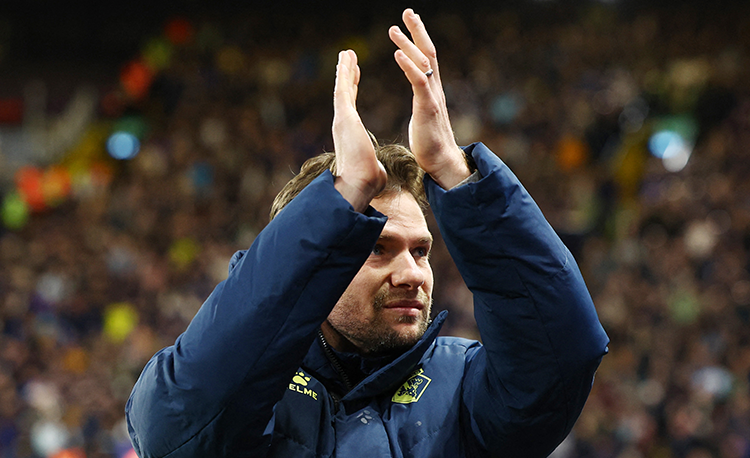Create chances and score goals with attacking transitions
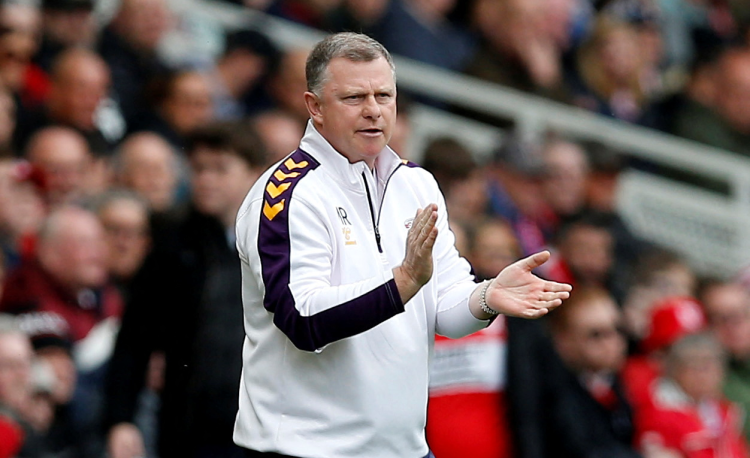
| Area | 65x20 yards |
| Equipment | Balls, bibs, cones, 2 full size goals |
| No. of Players | 12 players + 2 goalkeepers |
| Session Time | Attacking transitions: 16mins |
This session creates opportunities for attacking transitions. Every aspect of play will be challenged, including the reaction of the players, the ball speed, and the pace and quality of the movement.
I like this session because players have to work hard together to get the reward of winning the ball back and they must be ready to attack at pace and with creativity. This keeps them motivated and focused throughout the session.
If it is highlighted that an opposition team is susceptible to counter-attacks, we may use this session in the early part of the week to start drip feeding detail to our players.
This session can also be used in pre-season to get higher physical returns.
“I like this session because players have to work hard together to get the reward of winning the ball back and they must be ready to attack”
ATTACKING TRANSITIONS
We set up a playing area of 65x20 yards with a goal and goalkeeper at each end. The playing area is split into three zones, with two 30-yard end zones either side of a 5-yard centre zone.
We’re using 12 outfield players split into three teams of four. The blue team starts in one end zone and the red team starts in the other end zone – the players from both end zone teams are locked in their zones. The yellows begin in the centre zone as the pressing team and they can enter the end zones with as many players as they wish to try to win possession and score.
The red team starts play and they pass to keep possession and attempt to transfer the ball across the centre zone to the blue team, while the yellows send players into the end zone and look to win the ball back, as shown [1a].
[1a]
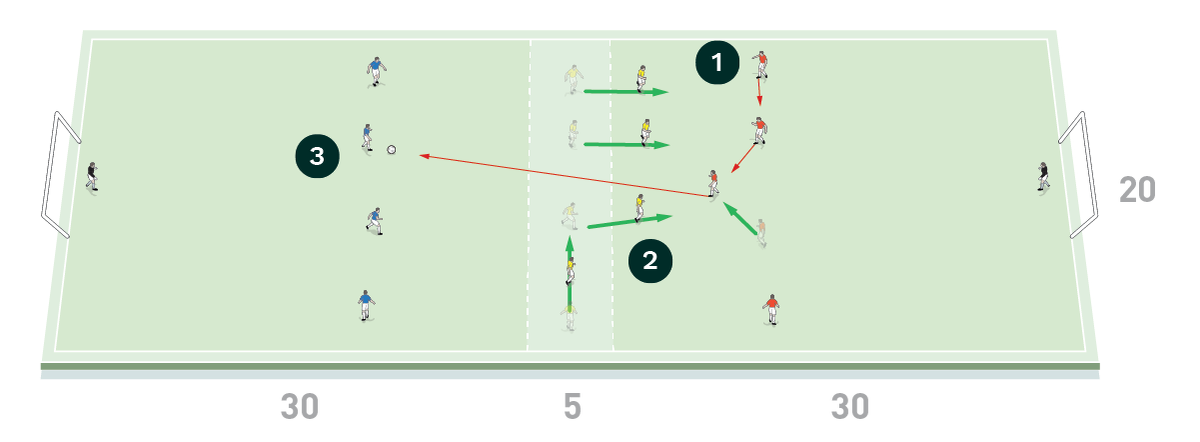
- The reds start in possession and they pass the ball and aim create an opportunity to transfer it across to the blue team in the opposite end zone
- The yellows must try to win possession and here they send three players into the end zone to press the red team
- The reds successfully transfer the ball to the blues at the other end
If the reds successfully transfer the ball to the blues, the blue team must try to work it back to the reds under pressure from the yellows, who have sent players into the blue team’s end zone to press.
“If the reds successfully transfer the ball to the blues, the blue team must try to work it back to the reds under pressure from the yellows”
However, if the pressing team wins possession, they must transition to counter-attack one of the goals. For scoring in the nearest goal they receive one point, as shown [1b].
[1b]
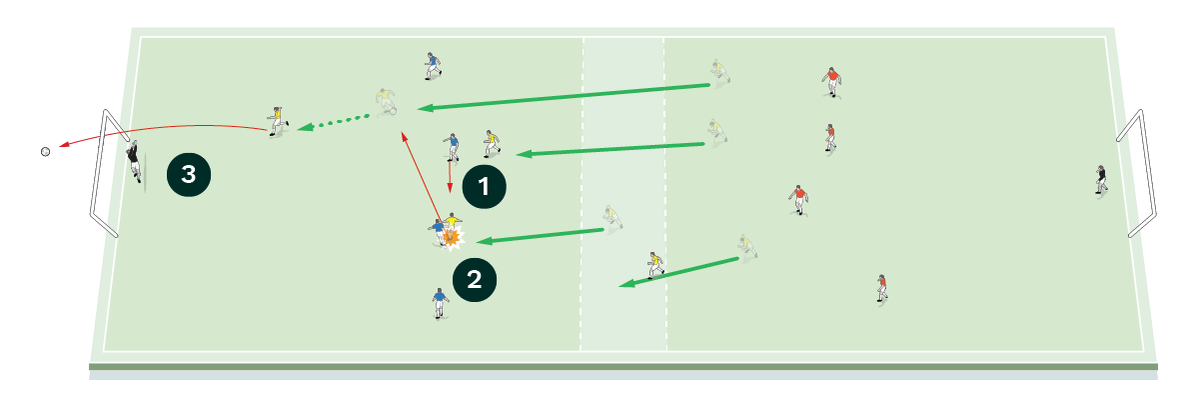
- The blue team receives the ball looks to keep possession and work it back to the red team
- The yellows cross into the blue team’s end zone to press. They win the ball back and transition to counter-attack one of the goals
- For winning possession and scoring in the nearest goal, the pressing team gets one point
For winning possession and counter-attacking the goal in the opposite end zone the pressing team receives two points, as shown [1c].
[1c]
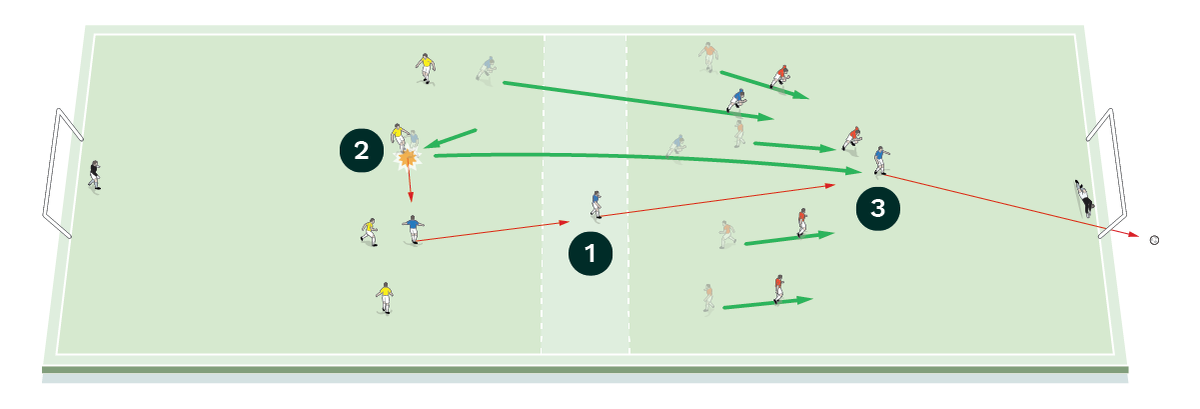
- After conceding a goal, the blue end zone team swap roles with the yellow pressing team
- The yellows start with the ball and the blue team sends players into the yellow team’s end zone to press
- If the pressing team wins the ball and scores at the opposite end to where possession was won, they get two points
COACHING POINTS
What are the key things to look out for?
Emphasis is put on the out-of-possession principles to win the ball back. We want to see the nearest players using aggressive pressing as quickly as possible and we want the players who are further away from the ball anticipating opportunities by being ready to react and joining the attack on transition.
We also want to see quick switches of play, with players encouraged to pass the ball quickly to the opposite side of the pitch to where possession was won.
Players have two key roles in this session - they should take up positions that allow pressing or defensive depth, but also positions that allow them to counter-attack on regaining the ball.
The team that has lost possession should be challenged on their decision making in transition on whether to press or delay the counter-attacking team.
What are the typical mistakes players might make and how do I avoid them?
Sometimes players aren’t aggressive enough in the press. Without really aggressive pressing there won’t be enough opportunities to counter-attack, which the session needs to be successful. Intensity needs to be driven.
Editor's Picks
Attacking transitions
Deep runs in the final third
Using the goalkeeper in build-up play
Intensive boxes drill with goals
Penetrating the final third
Creating and finishing
My philosophy
Pressing initiation
Compact team movement
Coaches' Testimonials

Alan Pardew

Arsène Wenger

Brendan Rodgers

Carlos Carvalhal

José Mourinho

Jürgen Klopp

Pep Guardiola

Roy Hodgson

Sir Alex Ferguson

Steven Gerrard
Coaches' Testimonials

Gerald Kearney, Downtown Las Vegas Soccer Club

Paul Butler, Florida, USA

Rick Shields, Springboro, USA

Tony Green, Pierrefonds Titans, Quebec, Canada
Join the world's leading coaches and managers and discover for yourself one of the best kept secrets in coaching. No other training tool on the planet is written or read by the calibre of names you’ll find in Elite Soccer.
In a recent survey 92% of subscribers said Elite Soccer makes them more confident, 89% said it makes them a more effective coach and 91% said it makes them more inspired.
Get Monthly Inspiration
All the latest techniques and approaches
Since 2010 Elite Soccer has given subscribers exclusive insight into the training ground practices of the world’s best coaches. Published in partnership with the League Managers Association we have unparalleled access to the leading lights in the English leagues, as well as a host of international managers.
Elite Soccer exclusively features sessions written by the coaches themselves. There are no observed sessions and no sessions “in the style of”, just first-hand advice delivered direct to you from the coach.







